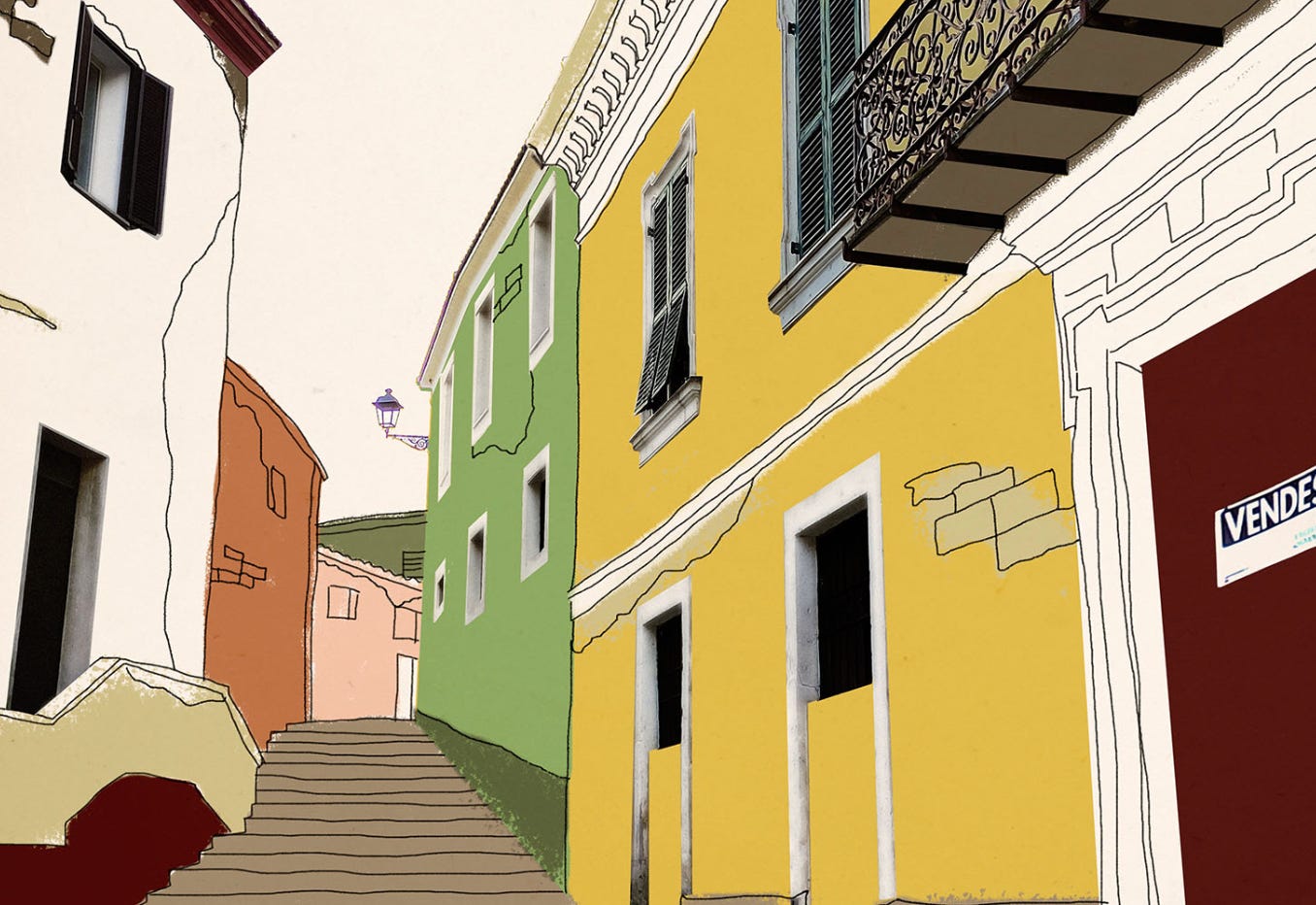Like a One-Euro Avalanche
From Sardinia to Maremma, with pit stops in London and San Francisco: how a foreign report triggers the Italian media’s latest love affair with “reviving” abandoned villages
You can read the original Italian article by Matteo Cerri on Esco quando voglio
There’s a storyline we Italians know far too well. A California-based journalist, Lauren Markham, stumbles upon the “€1 house” trend in Italy (which, let’s be honest, was about time), gets intrigued (sort of), and writes a long, thoughtful essa…




